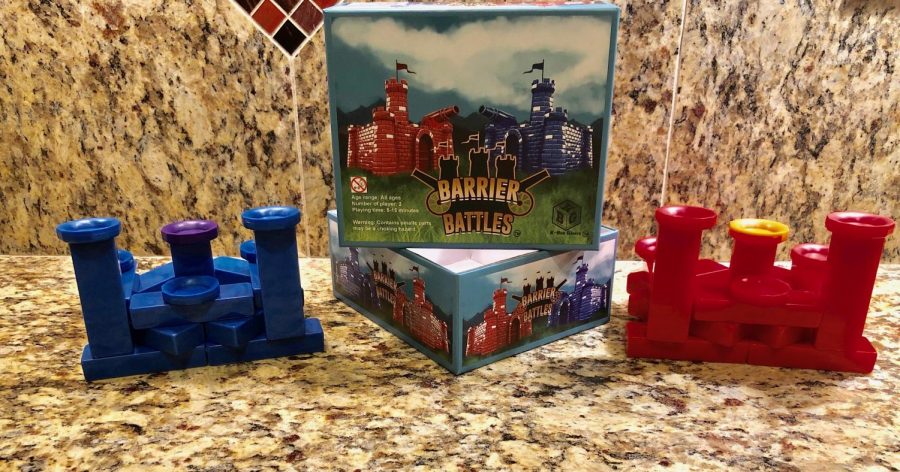Senior entrepreneurs create and sell new game
“Barrier Battles” promises to be a game of wit and skill according to creators
There are many barriers to coming up with an original game, but seniors Bobby Becker and Kyle Levy have stepped up to the plate to take these battles head on.
Becker and Levy, who have been friends since preschool, invented Barrier Battles in 5th grade. Since then the play and materials have been fine tuned many times.
Becker brought the current version of Barrier Battles to his summer camp, North Star, in 2018. In May 2019, Becker decided to ask Levy to help pursue selling Barrier Battles in the market.
“I introduced it to kids in my summer camp and they were absolutely in love with it. And then I introduced it to kids in my advisery and they liked it a lot,” Becker said.
The game sales are off to a good start, with around 50 pre-sales online and 15 sold around the school. Becker and Levy are manufacturing 1,500 sets with LongPack Games that are expected to be released in Dec. 2019.
Due to the popularity of this game at New Trier, the two boys have decided to start a Barrier Battles club. The club will meet on Tuesdays with Business Department Chair Kevin Kansler as the sponsor.
“A club meeting will be in a tournament structure so whoever comes are either allowed to free play with other people or you could choose to be in a tournament,” Levy said.
Becker thinks that people have such a positive response to the game because of its easy rules and gameplay.
Barrier Battles is a melding between Levy’s interest in building and architecture and Becker’s interest in strategy and puzzle solving.
“It has been a culmination of two things we really enjoy,” Levy said.
The point of the game is to protect your king, while simultaneously trying to hit your opponents king with your pieces.
Barrier Battles is a dexterity game and is somewhat similar to Jenga, Pool, Chess, and Flick em’ Up. The game also relies on strategy in that it has two parts: the building and the battling.
“I wouldn’t say the whole game is based on flicking, it’s a lot of strategy with building your base and how the pieces are positioned. You can kind of win or lose the game from before the game has begun,” Levy said.
The first step of building consists of moving the blocks to create a base to protect their king piece. There is plenty of flexibility in the design stage which allows for strategy and imagination of the player.
“I have seen a lot of different things they have done, the made battle ramps that fire, they have made little cannons, little ramps to shoot their pieces,” Becker said.
Then the battle begins as the player flicks their pieces to eliminate the other team’s pieces. Because of the simple rules of the game, it allows for a vast array of strategies and very different game plays.
“No two games [of Barrier battles] are quite alike,” Becker said.
The game is popular with high school students, but also appeals to a wide range of ages from grandparents to children.
“Some eight year olds can play while some eight year olds are really destructive and can’t seem to grasp the idea. But on our box we mention all ages because we don’t want to restrict. You can get a four-year-old who’s a lot more mature for his age and kind of play,” Levy said.
While the two seniors have enjoyed creating the game, they are not looking to becoming the next Parker Brothers as a career choice.
“We aren’t really board gamers ourselves, we aren’t probably going to make new original games. We would probably make alterations of Barrier Battles, different game modes, different pieces, and sizing, Becker said.
As more of their classmates and friends have played the game and provided input, the game creators have been developing new game modes.
“We are also planning on playing in different alternate game modes, like game modes where the king is a mystery or game modes where pieces don’t get out unless they get knocked off the board. So there is a lot of versatility to the basic structure,” Becker said.
From those first days in 5th grade playing with coins, rocks and other miscellaneous materials to creating the prototypes on the 3D printer, Levy was a believer in Becker’s game vision. He expressed this belief on the game’s website.
“From the first time I played Barrier Battles, I felt there was something unique, and even revolutionary about the about the game; I knew I had to join the battle,” Levy wrote.








































